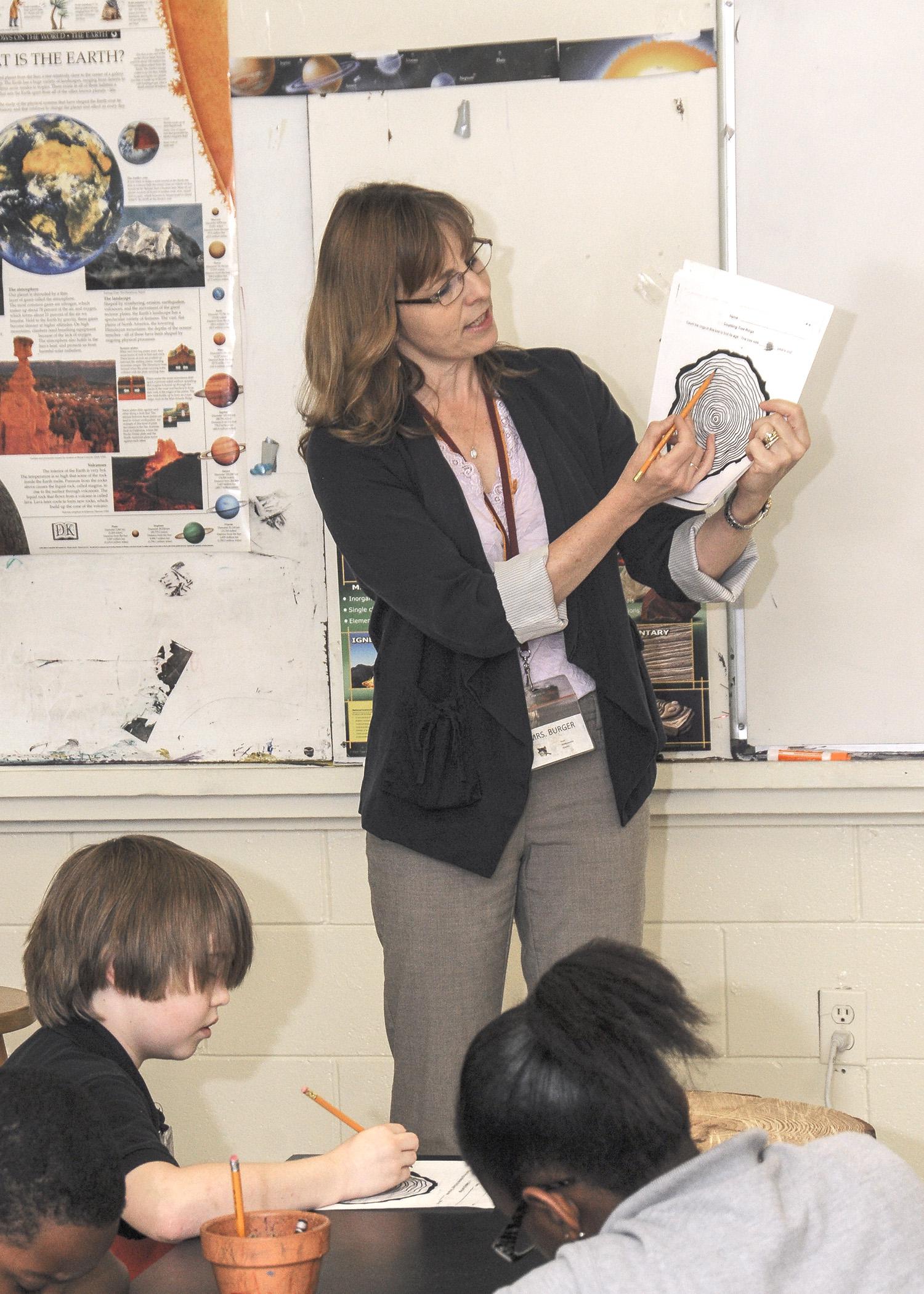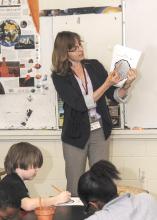Information Possibly Outdated
The information presented on this page was originally released on May 7, 2013. It may not be outdated, but please search our site for more current information. If you plan to quote or reference this information in a publication, please check with the Extension specialist or author before proceeding.
MSU instructor promotes environmental stewardship
MISSISSIPPI STATE – When kids react to the natural world, Leslie Burger wants them to say “Oh, wow!” instead of “Oh, gross!”
“I want people to understand what is happening around them and to appreciate it,” said Burger, an Extension instructor at Mississippi State University’s Forest and Wildlife Research Center. “When they hear a bird singing in a tree, do they stop and listen? Do they try to find it? Do they run over a snake in the road because they think all snakes are evil, or do they swerve to give it life?
“Do they understand, when they pour oil in the storm drain, that it impacts the water they and others are drinking?” she asked.
Burger brings a wide range of experiences to her role as an environmental educator. After getting her bachelor’s in wildlife ecology from Murray State University and her master’s in wildlife ecology from the University of Missouri, Burger worked for the Missouri Department of Conservation for several years.
When she relocated to Mississippi, she stayed home to raise and homeschool her three sons.
“I was a 4-H volunteer leader and the Oktibbeha County shooting sports coordinator. I trained kids in wildlife judging, helped with land judging, and taught a high school biology class for homeschool kids,” Burger said. “We dissected things in my garage.”
Burger’s passion for sharing nature with young people led her to a job with MSU’s Extension Service in 2008. As a doctoral student, she is evaluating the youth environmental science, or YES, program she developed with colleague Jessica Tegt.
“We want to know if this week-long science program is effective in increasing students’ understanding of natural science,” Burger said. “Do they retain it, and for how long? Do their attitudes about science change as a result of their involvement in the program?”
Burger describes an appreciation for the environment as a continuum.
“We look at attitudes and see if we’re moving them along the continuum from not caring to beginning to care about the environment, or from being afraid toward not being afraid of the natural world,” she said.
The week-long YES curriculum focuses on earth science, humans and the environment and forestry and includes many hands-on activities.
Henderson Ward Stewart students enjoyed a close-up look at a variety of animals, such as turtles, fish, a hamster, a guinea pig and a king snake.
“Did you know you can tell if a snake is venomous or nonvenomous by the slit in its eye?” asked 9-year-old Aaron Wan, a fourth grader.
“I liked finding rocks outside,” said 10-year-old Ny’Kerria Logan, also in fourth grade. “Some rocks have fossils in them.”
Whether it was striking a crystal rock against other types of rocks to determine their properties or counting tree rings to figure out how old trees were when they were cut down, the students were intrigued by the wonders of nature Burger and Tegt shared with them.
Sam Riffell, an associate professor at MSU’s Forest and Wildlife Research Center, said the program in Starkville can make a difference in the lives of participants as well as the field of conservation education.
“Burger and Tegt’s hard work and passion are having a big impact on Starkville students,” Riffell said. “Because of Leslie’s rigorous evaluation of the program, their work could produce an improved model for this type of education everywhere.”
Burger said she has benefitted from working with the elementary school students because they help her slow down and remember why she got into wildlife ecology in the first place.
“There is an amazing complexity in a pine tree’s ecosystem -- eggs under the bark, insect tunnels, sap from where a woodpecker pecked at it,” she said. “I watched a very active child stop and explore and rest his mind as he studied that tree. There is a joy of life that we forget, and there is life all around us, even if it’s just a pine tree in the school yard.”








